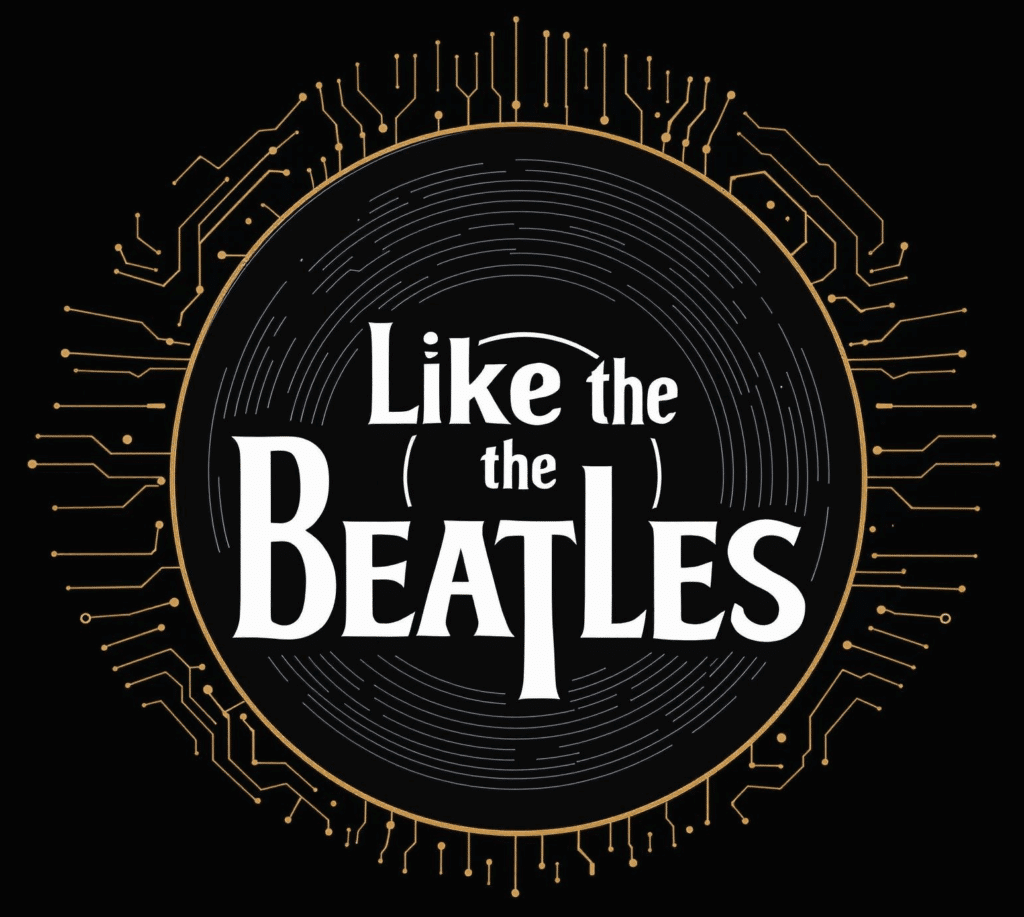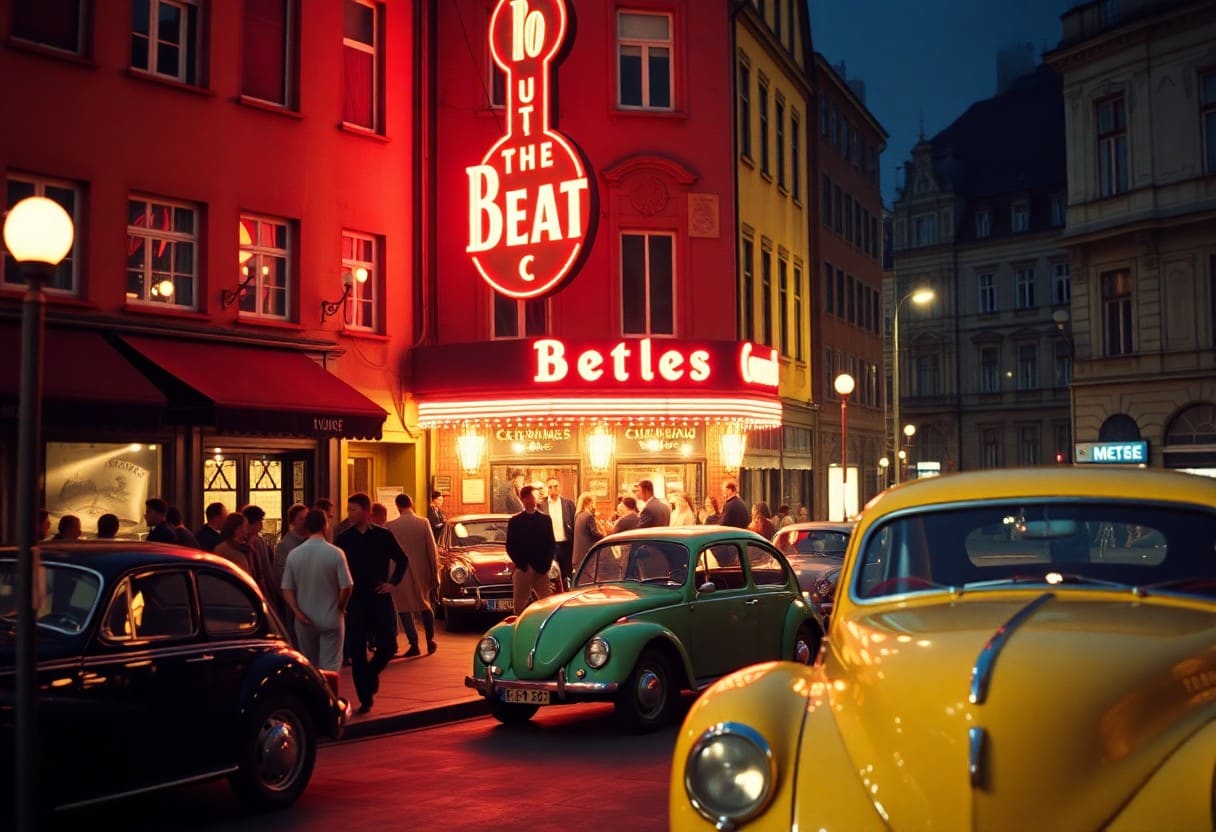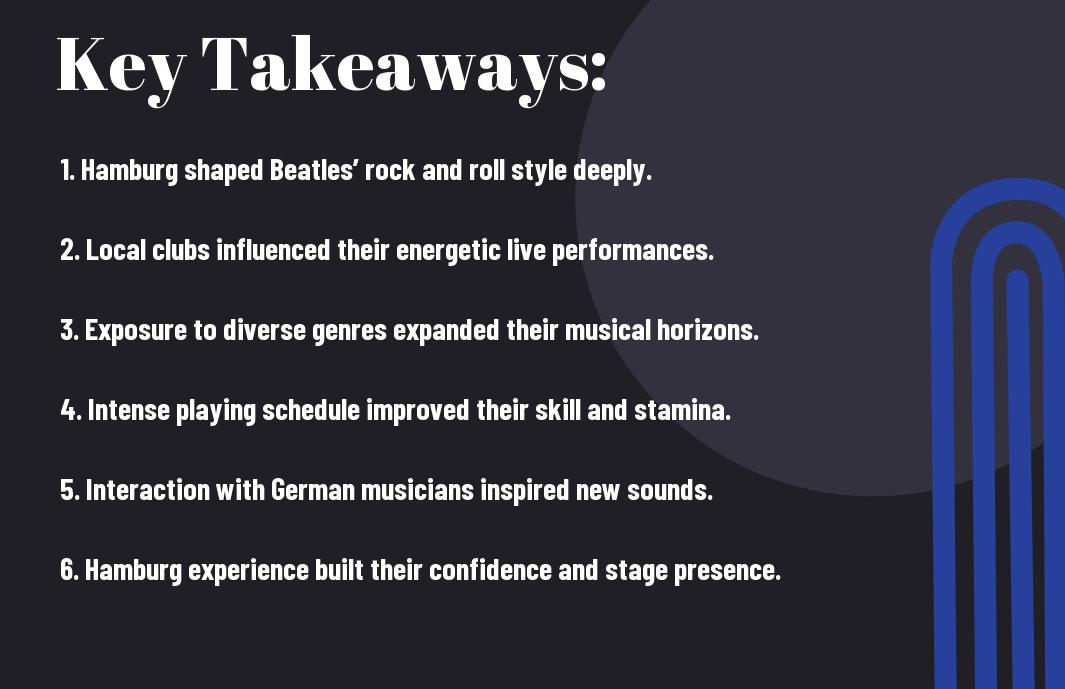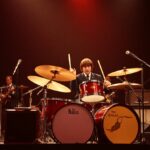Many fans of The Beatles may not realize the profound impact of their time in Hamburg on their musical evolution. As I investigate into this fascinating period, I invite you to explore the vibrant music scene and cultural exchange that shaped their artistry. By understanding their experiences in this lively city, you can gain insight into the diverse influences that molded their iconic sound. Join me on this journey to uncover the roots of their creativity and how Hamburg played a pivotal role in their transformation from a local band to global legends.
The Hamburg Scene
Before The Beatles became a global phenomenon, they honed their skills in the vibrant and gritty atmosphere of Hamburg. This city’s unique music scene provided a backdrop for the band’s early development, allowing them to blend various influences and refine their craft in front of energetic and often chaotic crowds.
Background of the City
With its bustling port and a reputation for nightlife, Hamburg was a melting pot of cultures and music. In the early 1960s, the city hosted an influx of musicians from all over, creating a rich environment where The Beatles would find inspiration, innovation, and an opportunity to experiment.
Key Venues and Clubs
Between famous clubs like the Star-Club and Indra Club, The Beatles performed relentlessly, shaping their live performance prowess. These venues were fundamental in defining their sound and style, as they played for hours every night, engaging their audience in ways that would later become their trademark.
Considering the vibrant nightlife and eclectic mix of patrons at these venues, they stood out as hub for emerging talent and iconic nightlife. The Star-Club, in particular, was notorious for its congregations of both musicians and fans. Each performance saw a mixture of local German bands and international acts, creating an electric atmosphere full of energy and competition. The Beatles not only adapted to this lively scene but thrived in it, leading to their impressive skill set that would catapult them to fame. Their time in these clubs played a significant role in shaping the future of rock music.
Musical Influences
If you want to truly understand The Beatles’ sound, you need to look into the musical influences that shaped their artistry during their formative years in Hamburg. The eclectic mix of genres they encountered emerged as a foundation for their innovative style, leaving a lasting mark on their music. From American rock and roll to local skiffle, these influences spurred their creativity and fuelled their hunger for musical exploration.
American Rock and Roll
Any exploration of The Beatles’ music must include their deep connection to American rock and roll. Bands such as Buddy Holly and Chuck Berry inspired them with their catchy melodies and energetic rhythms. This genre not only shaped their songwriting techniques but also influenced their performance style, evident in their early gigs where these pioneering sounds were central to their sets.
Skiffle and Early British Music
By navigating the rich landscape of skiffle and early British music, I found that these genres played a significant role in The Beatles’ development. Their fascination with skiffle—a blend of folk, blues, and jazz—spurred them to experiment with different sounds and instruments, making it an necessary part of their musical journey. The focus on simple instrumentation and catchy vernacular within skiffle not only connected them with their British roots but also helped them appeal to a wider audience. This local scene cultivated a spirit of innovation and collaboration, which I believe was pivotal in shaping their iconic sound.
The Beatles’ Early Sound
After spending significant time in Hamburg, I noticed The Beatles developed a raw energy in their music that set them apart from their contemporaries. The vibrant nightlife and relentless gigging helped shape their early sound, blending rock and roll, skiffle, and rhythm and blues. This intense environment, alongside their dedication, forged a unique style that reflected their youthful exuberance and honed their skills as musicians and performers.
Formation of their Musical Identity
Against the backdrop of Hamburg’s bustling music scene, The Beatles cultivated a diverse musical identity. Their exposure to various genres and styles, while performing in numerous clubs, encouraged them to experiment and blend influences. This period laid the groundwork for their later innovations and set the stage for their emergence as a leading force in popular music.
Key Songs from the Hamburg Era
Musical highlights from the Hamburg era reveal The Beatles’ burgeoning talents and songwriting abilities. Songs such as “Ain’t She Sweet” and “Crying, Waiting, Hoping” showcased their knack for catchy melodies and tight harmonies, capturing the attention of audiences. These early tracks not only energized their sets but also laid the foundation for the distinctive sound that would define their future work.
This period was significant in refining their craft, as I have found that the non-stop performing in Hamburg pushed them to experiment with various styles and become more important as songwriters. Tracks like “Love Me Do” and “I Saw Her Standing There” drew from the rich mix of influences encountered during their time in the city, combining uplifting rhythms with relatable themes. The resulting music not only resonated with their audiences but also elevated their status as emerging stars, setting the stage for the massive impact they would later have on global music culture.
The Role of Live Performances
Not only did The Beatles’ time in Hamburg serve as a breeding ground for their musical talent, but it also highlighted the significance of live performances in their development as artists. The rigorous gig schedule forced them to adapt their sound and stage presence, laying the groundwork for their eventual global superstardom.
Development of Stage Presence
Development of a captivating stage presence was imperative for The Beatles during their Hamburg years. Playing countless shows in the vibrant nightlife environment, they honed their energy and charisma while learning to engage with the audience, setting the foundation for their iconic performances.
Audience Interaction and Impact
For The Beatles, audience interaction became a key element of their live shows. They quickly realized that engaging with fans not only created an electric atmosphere but also fostered a deeper connection between the band and the crowd.
Plus, this focus on audience connection transformed their concerts into memorable experiences, with fans drawing enthusiasticly closer, which enhanced the overall vibe. The band’s playful banter and spontaneous actions not only engaged the crowd but also created a sense of excitement. They mastered the art of reading the audience’s energy, and as a result, their performances became truly unforgettable, setting a benchmark for future generations of performers.
Collaborations and Other Bands
Despite their iconic status, The Beatles’ innovative sound was significantly shaped by their interactions with various bands and artists during their formative years in Hamburg. While performing in the city’s vibrant club scene, I found that they absorbed diverse musical styles, which later evolved into their unique blend of rock, pop, and rhythm and blues. Collaborations were integral to their growth, exposing them to new ideas and performances that would influence their songwriting and musicianship for years to come.
Influences from Fellow Musicians
Beside the experience of performing alongside other artists, The Beatles were directly influenced by musicians like The Searchers and The Big Three. I discovered that their exposure to these bands not only honed their performance skills but also introduced them to new chord progressions, rhythms, and harmonies that would later resonate in their own work.
Notable Collaborations
Beside the myriad of local musicians, The Beatles enjoyed notable collaborations with various artists throughout their rise to fame. Their partnerships weren’t just about recording; they often involved live performances that solidified their presence in the music scene. As you research into their history, you’ll notice that these collaborations helped them refine their style and experiment with new sounds.
Indeed, these notable collaborations included influential figures such as Brian Epstein, who became their manager and played a significant role in their early success. Additionally, their interaction with producer George Martin shaped the sonic landscape of their music, as he introduced them to novel recording techniques and experimental sounds. The Beatles’ ties with fellow artists were not only a foundation of their development but also served as a springboard for innovative projects, demonstrating that collaboration can inspire creativity and lead to extraordinary outcomes.
Lasting Impact of Hamburg
Unlike many bands of their time, The Beatles’ formative years in Hamburg instilled a unique energy that shaped their artistry. This vibrant city played a pivotal role in their development, refining their performance skills and expanding their musical influences. You can examine into this fascinating history with the Hamburg: Beatles History, Self-guided Exploration Tour. Exploring the venues where they performed offers insight into the raw grit that helped them evolve into the world-renowned band they became.
Evolution of their Music Post-Hamburg
Any music enthusiast can recognize the distinct evolution in The Beatles’ sound after their Hamburg days. The long nights of performing in various clubs endowed them with confidence and a diversified repertoire, which led to adventurous experimentation in their studio recordings, notably in albums like “Rubber Soul” and “Revolver”.
Recognition of Hamburg’s Influence in Later Work
On multiple occasions, band members acknowledged Hamburg’s profound influence on their music evolution. They frequently referred to their time there as a formative experience that shaped their identities as artists.
Recognition of the lasting impact of Hamburg is reflected in The Beatles’ diverse musical styles and innovative techniques. Their experiences in the bustling nightlife honed their skills in various genres, including rock, pop, and rhythm and blues. This dynamic environment unleashed their creativity, as evidenced by classics like “Twist and Shout” and “Help!”. The energetic atmosphere of the Hamburg clubs allowed them to experiment and evolve, leading to a unique fusion of influences, branding them as pioneers in the music world. It’s imperative to appreciate how these formative years fueled their artistic journey.
To wrap up
Conclusively, to fully appreciate The Beatles’ musical evolution, I encourage you to examine into their time in Hamburg, where their sound was forged through countless performances and the influence of rock ‘n’ roll, skiffle, and rhythm and blues. You can explore the playlists, venue histories, and interviews to capture the essence of this transformative period. Understanding their Hamburg years will enrich your perspective on their creative process and the attributes that shaped their legendary status in the music world.












